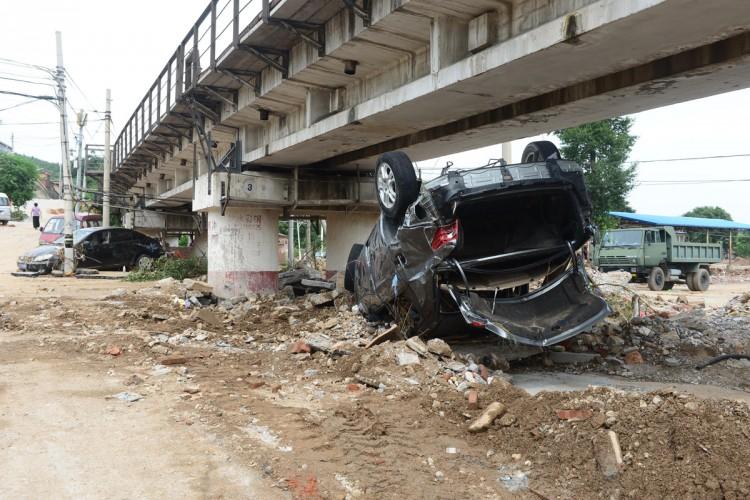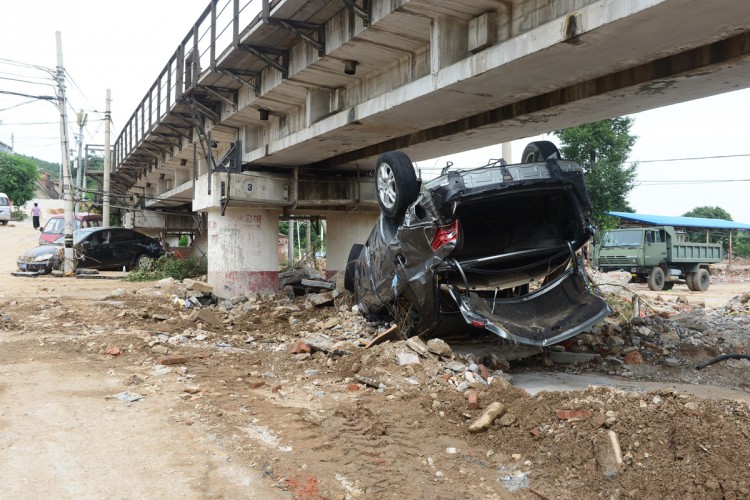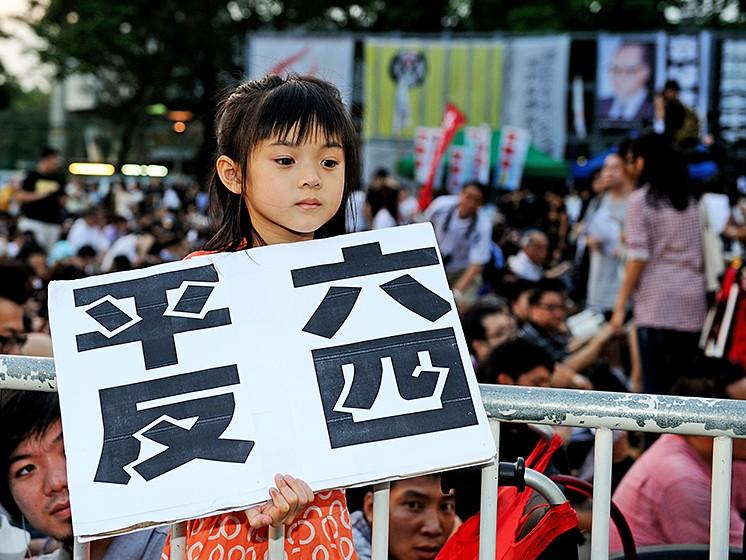An apparently unnecessary death in Beijing’s floodwaters of the editor of a children’s magazine seized the attention of China’s microblog users Tuesday. The editor’s death is a specific case that illustrates the public’s sense that state-run media has been giving false reports in its coverage of the catastrophe and authorities have been handling the flood poorly.
Around 7 p.m. on July 21, Ding Zhijian was driving back to his workplace, where he was the editor-in-chief of a children’s science magazine called Ah Ah Bear, when he became trapped under Guangqumen Bridge. The water was 3 meters (nearly 10 feet).
Ding could not open the car door, and called his wife Qiu Yan for help. Qiu dialed 110 (China’s emergency call number) but all the lines were busy, according to state-run media.
According to Ding’s colleague Zhang Qingli, China’s state-run media gave false reports on Ding’s death. According to a message Zhang posted early in the morning on July 23 on his microblog on Sina Weibo, police and firefighters delayed coming to Ding’s rescue.
Zhang’s message struck a nerve. It was reposted more than 12,000 times in a few hours but was then deleted by Sina Weibo, which operates under the communist regime’s censorship.
“Although according to the [state-run media] reports it sounds like they rescued him in time; that is not the case,” reads the beginning of Zhang’s message.
State-run media claimed that three hours later, at 10:30 p.m., police arrived at the scene.
“Five cars were trapped in the water [around Guangqumen Bridge],” Cui Jinbo at the Bureau of Landscape And Forestry told state-owned media. “The car was full of water, and the man was still sitting in the driver’s seat.”
But the victim’s colleague gave a different account: “The main reason [for his death] was that the rescue was two hours late and the best chance to save him was missed. Actually, [Ding’s wife] Qiu Yan arrived at the scene at 8:30.
“She begged police to help, and the police asked her to find firefighters. She then cried and begged the firefighters, who insisted that no cars were trapped down there. Qiu Yan clearly gave them the exact location, but the firefighters refused to help her.
“Even the crowd was angry [at the firefighters], and a young man undressed and jumped into the water. But the current was too strong, so he swam back. Later, the firefighters finally agreed to drive onto the bridge. But they did not take action.
“Qiu Yan begged them nonstop. Then, they received a call and said that their boss was on his way. Only then did they start the rescue, but ... The truth is that they only started the rescue after people from the media arrived with cameras. I worked with the man who perished, and that’s why I have spelled out the truth.”
“It was with the hope of finding the truth and with respect that I reposted the story of Mr. Ding’s death at Guangqumen. My post was soon deleted. As a netizen, I understand Sina’s helplessness and the force and pressure it is under. But I still feel the despair just like when floods rise above a person ...” commented fif2006, one of the more than 12,000 Weibo users who reposted Zhang’s message.
A native of the coastal province of Jiangsu, Ding obtained a master’s degree at the prestigious Beijing University and settled down in Beijing with his family. He left behind his wife and their 3-year-old daughter.
Many in Beijing have doubted the official death toll of 37. Ms. Zhang (not believed to be related to the author of the Weibo message) from the Fangshan District in Beijing told The Epoch Times that 37 deaths cannot possibly be true. “It does not include the deaths in the suburbs. Saying that there are only 37 deaths is a cover-up.”
Zhang said that in the region with the highest casualties in the Shidu Scenic Area, all the buildings were flooded and many tourists had died. “When the water receded, we found dozens of bodies washed down from there.”
A spokesperson for the Beijing government refuted questions over Beijing’s death toll, according to the Wall Street Journal.
Dramatic changes in state-run reports on the scale of the damage sparked outrage among the Chinese. Although originally described as the worst storm in 61 years, the disaster has since been dubbed the worst in 500 years for Fangshan, one of Beijing’s districts.
The impact was said to have affected other areas, and the death toll was raised to 95 nationally. Serious flooding is expected in various areas near the Yangtze River in the south.
China’s Internet users have taken Beijing authorities to task for the suffering there, blaming the disaster on poor infrastructure resulting from incompetence and corruption.
During the three days since the disaster hit Saturday, none of the Communist Party’s top leadership—the nine members of the Politburo Standing Committee—have made official statements.
The Epoch Times publishes in 35 countries and in 19 languages. Subscribe to our e-newsletter.






